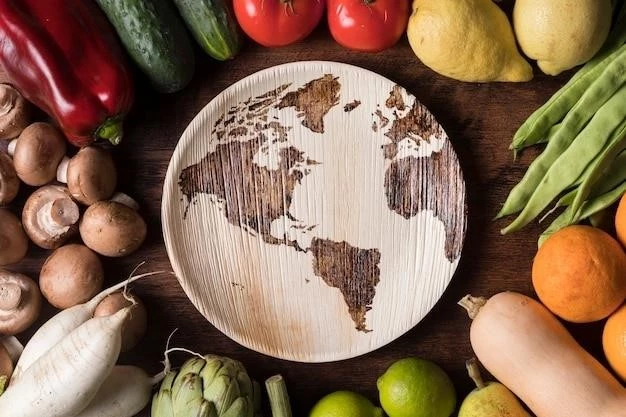Climate change poses a significant threat to global food security, jeopardizing the availability, accessibility, and stability of food systems worldwide. As the planet warms and weather patterns become more erratic, agricultural productivity is disrupted, leading to food shortages, price volatility, and increased malnutrition. This article delves into the complex interplay between climate change and food security, exploring the challenges it presents and outlining potential solutions.
Impacts of Climate Change on Food Security
Climate change exerts multifaceted impacts on food security, affecting various aspects of agricultural production, distribution, and consumption:
1; Reduced Crop Yields
Rising temperatures, altered precipitation patterns, and increased frequency of extreme weather events, such as droughts, floods, and heat waves, negatively impact crop yields; These stressors disrupt plant growth, reduce pollination, and increase pest and disease infestations, leading to lower harvests and food shortages.
2. Water Stress
Climate change exacerbates water scarcity, as rising temperatures increase evaporation rates and erratic rainfall patterns deplete water resources. This water stress impacts irrigation systems, limiting agricultural productivity and threatening food production, particularly in arid and semi-arid regions.
3. Increased Pests and Diseases
Warmer temperatures and altered precipitation patterns create favorable conditions for pests and diseases to thrive, leading to increased crop losses and reduced food availability. Climate change also facilitates the spread of invasive species, further disrupting agricultural ecosystems.
4. Food Price Volatility
Climate change-induced disruptions in agricultural production contribute to food price volatility, making it challenging for vulnerable populations to access affordable and nutritious food. Price fluctuations can exacerbate food insecurity and lead to social unrest.
5. Nutritional Deficiencies
Climate change impacts the nutritional content of food, reducing the availability of essential vitamins and minerals. Shifting agricultural practices and changing crop varieties can lead to nutritional deficiencies, particularly among vulnerable populations.

Addressing the Challenges
Addressing the challenges posed by climate change to food security requires a multi-pronged approach, encompassing adaptation, mitigation, and sustainable food systems:
1. Adaptation Strategies
Adaptation strategies focus on enhancing resilience to climate change impacts, enabling agricultural systems to cope with changing conditions. These strategies include:
- Developing climate-resilient crops: Breeding drought-tolerant, heat-resistant, and pest-resistant crop varieties to enhance resilience to climate change stressors.
- Improving water management: Implementing efficient irrigation techniques, rainwater harvesting, and water conservation measures to mitigate water stress.
- Adopting agroforestry practices: Integrating trees into agricultural landscapes to enhance soil fertility, regulate microclimate, and protect crops from extreme weather events.
- Early warning systems: Establishing early warning systems to predict and prepare for climate-related disasters, minimizing crop losses and ensuring timely responses.
2. Mitigation Measures
Mitigation measures aim to reduce greenhouse gas emissions, limiting the extent of climate change and its impacts on food security. Key mitigation strategies include:
- Reducing deforestation: Protecting forests, which act as carbon sinks, absorbing carbon dioxide from the atmosphere. Deforestation contributes significantly to climate change.
- Promoting sustainable agriculture: Implementing practices that reduce emissions from agriculture, such as reducing fertilizer use, improving livestock management, and promoting agroforestry.
- Renewable energy sources: Transitioning to renewable energy sources, such as solar, wind, and hydropower, to reduce reliance on fossil fuels, which are major contributors to greenhouse gas emissions;
3. Sustainable Food Systems
Transitioning to sustainable food systems is crucial for ensuring long-term food security in a changing climate. Key elements of sustainable food systems include:
- Reducing food waste: Minimizing food waste along the supply chain, from production to consumption, to enhance food availability and reduce resource use.
- Promoting healthy diets: Encouraging consumption of plant-based diets, which have a lower environmental footprint compared to meat-intensive diets.
- Strengthening local food systems: Supporting local food production and consumption to reduce reliance on long-distance transportation, minimize emissions, and enhance community resilience.

Conclusion
Climate change poses a profound threat to global food security, jeopardizing the availability, accessibility, and stability of food systems. Addressing this challenge requires a multi-pronged approach, encompassing adaptation, mitigation, and sustainable food systems. By implementing these strategies, we can enhance resilience to climate change impacts, reduce greenhouse gas emissions, and ensure that future generations have access to safe, nutritious, and affordable food.










